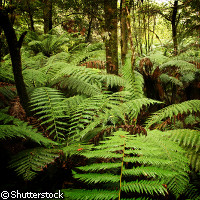ERC grant for frontier research on biodiversity
A new five-year EU funded project is to investigate the composition of species-rich communities such as tropical forests with the aim of increasing the understanding of the processes that govern biodiversity. The SPATIODIVERSITY ('Towards a unified spatial theory of biodiversity') project will receive EUR 2.8 million of funding over the next five years from the European Research Council (ERC) under the Ideas Thematic area of the Seventh Framework Programme (FP7). The ERC provides grants to allow scientists to carry out inventive frontier research of their choice. The project team, led by ecological modelling experts Dr Thorsten Wiegand and Dr Andreas Huth, will carry out work at the Helmholtz Centre for Environmental Research (UFZ) in Leipzig, Germany, to investigate why and how species co-exist in particular biodiversity-rich regions including grasslands, coral reefs and plankton ecosystems. Research in this area is vital for finding ways to preserve biodiversity, which is under threat from climate change and other human activities. 'To accomplish our goal, we are taking a radically different approach than previous attempts and adopting a spatially explicit perspective that will allow us to take significant steps towards a unified spatial theory of biodiversity,' explained Dr Wiegand. The team's approach will be based on the spatial distribution of species which has not yet been fully investigated. This will be analysed by computer modelling combined with the latest state-of-the-art spatial pattern analysis and simulation models of biodiversity-rich areas to try to understand the patterns that govern such communities. A particular challenge for the project will be the high level of complexity of the spatial structures analysed, and a high level of computer analysis is necessary to address this. The research team will also use an extensive range of data gathered from research areas in tropical forests which are home to hundreds of tree species. 'The project consists of three components,' said Dr Wiegand. 'In the first stage we will be using the latest spatial pattern analysis techniques to quantify the highly complex spatial structures.' 'At the same,' added Dr Andreas Huth, 'we will be putting together a raft of individual-based spatially explicit forest simulation models, ranging from simple 'neutral' models to detailed processed-based simulation models for forests. Our many years of experience of working with forest [simulation] models such as FORMIND and FORMIX3 will be an advantage here.' In the final stage of the project, the researchers will apply model selection techniques to discover which of the simulation models best reflects the observed spatial structures of the biodiversity-rich areas studied. The results of the project will help us to understand how systems of biodiversity work, which is essential if we are to halt the current deterioration of biodiversity and find ways to preserve it.
Countries
Germany



